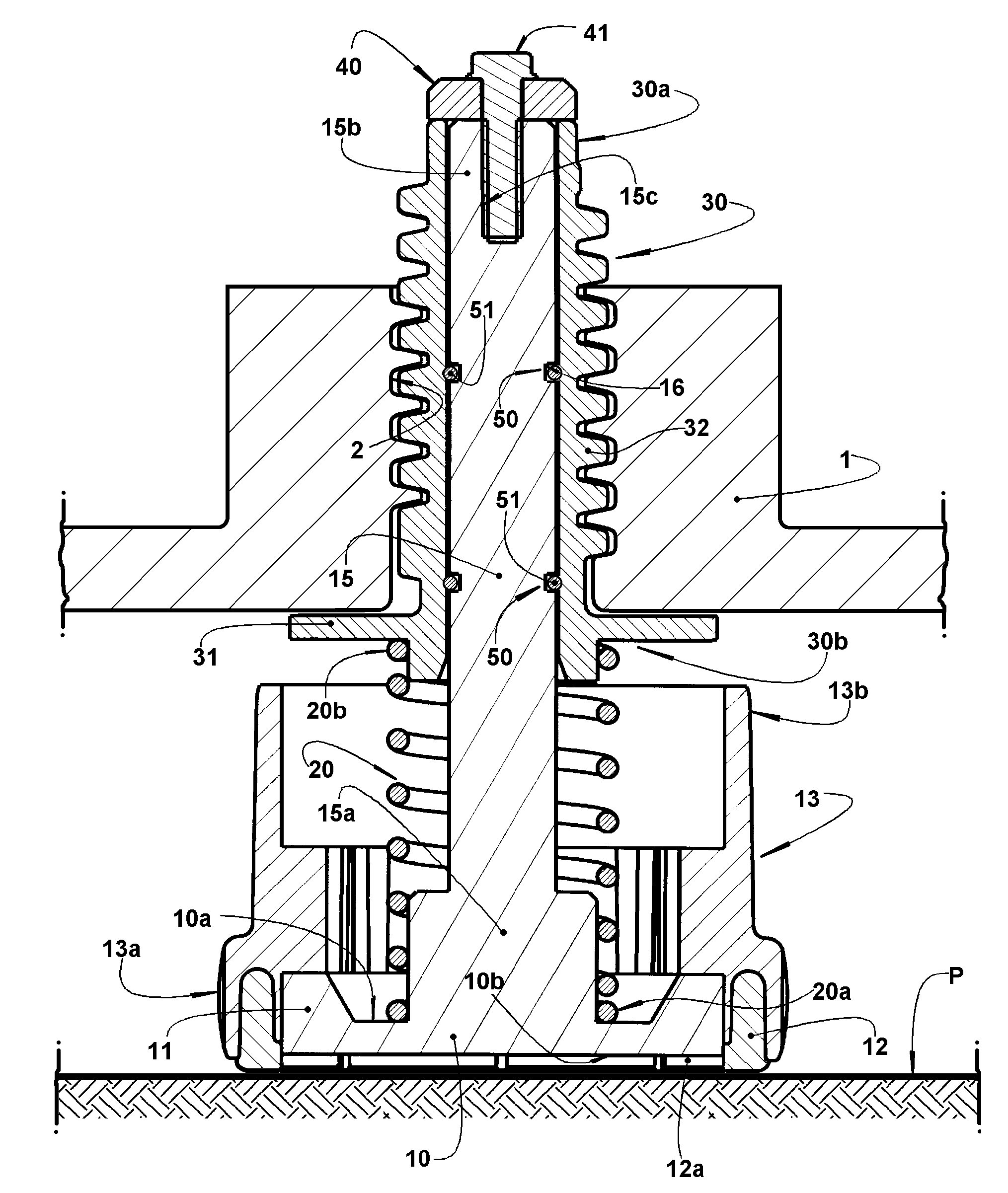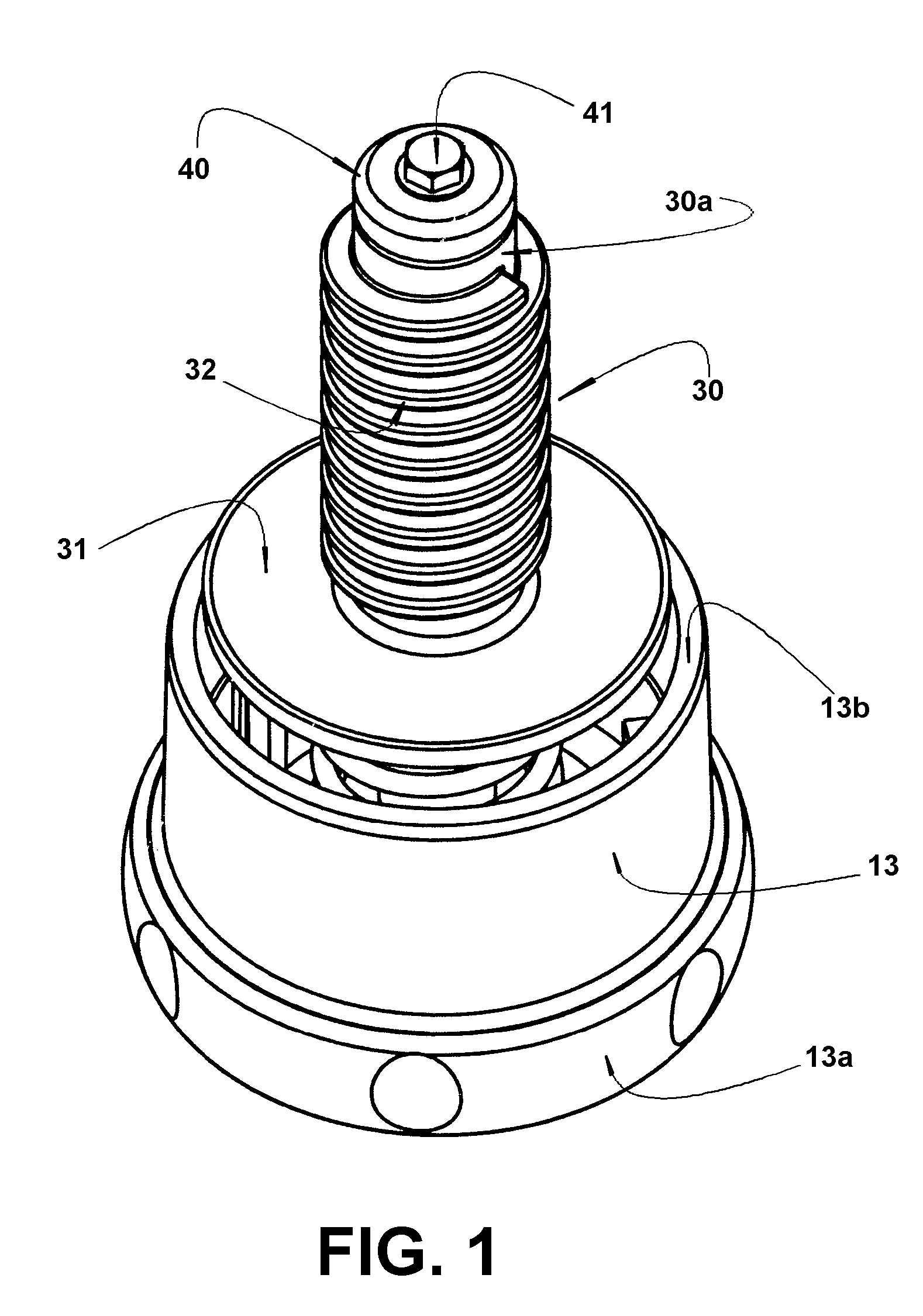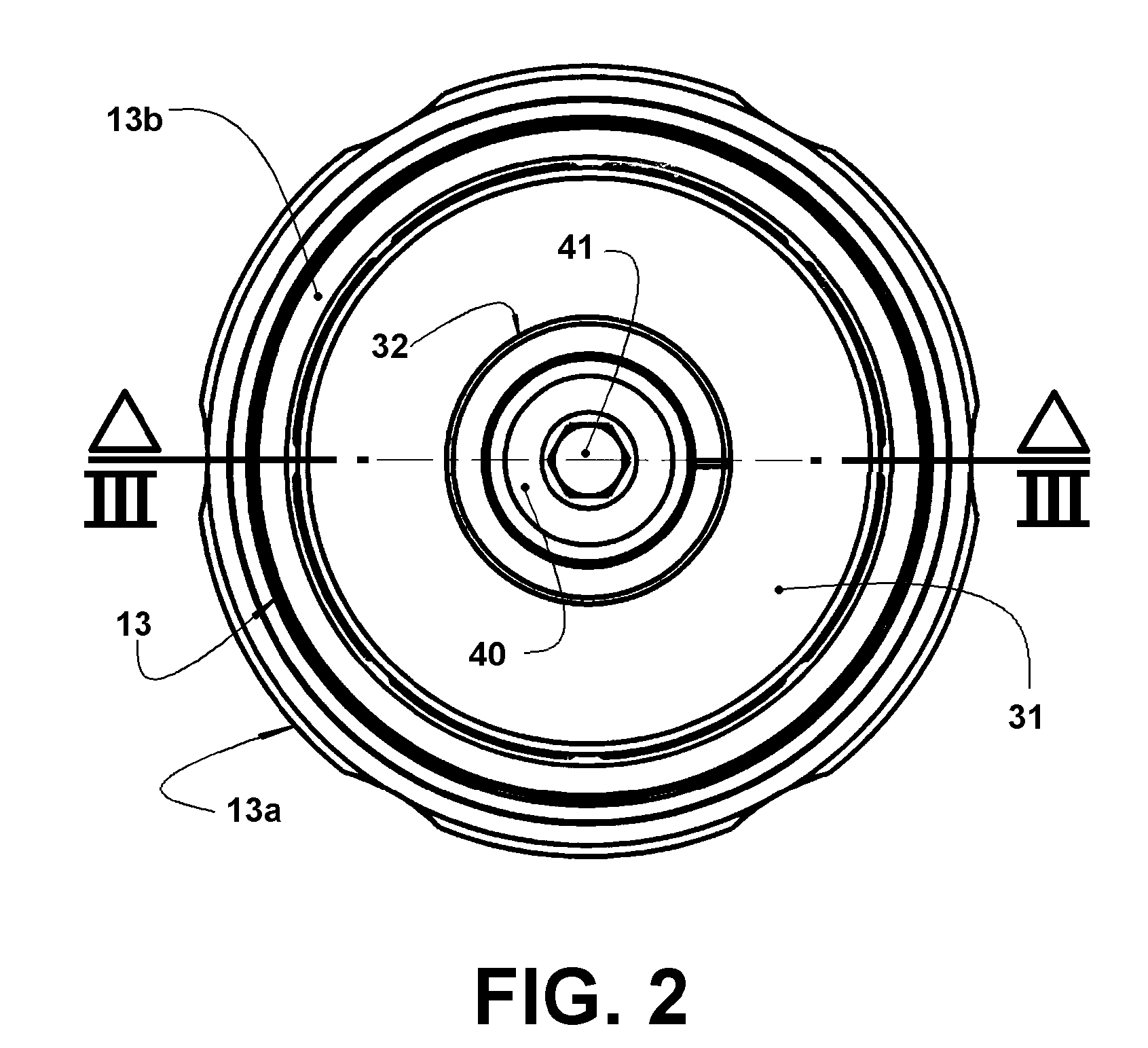Self-leveling foot for an appliance
a self-leveling and foot technology, applied in the direction of machine supports, furniture parts, cleaning equipment, etc., can solve the problems of vibration, shake, limp, more serious consequences, etc., and achieve the effect of high resistance, simple and strong, and great capacity to mov
- Summary
- Abstract
- Description
- Claims
- Application Information
AI Technical Summary
Benefits of technology
Problems solved by technology
Method used
Image
Examples
Embodiment Construction
[0018]As already mentioned and illustrated in the enclosed drawings, the self-leveling foot object of the present invention is of the type to be mounted under a lower frame portion of an appliance such as, for example, the washing machines in which the machine cabinet presents a lower frame portion 1 with any adequate construction, which permits the fixation of a plurality of feet, generally in the number of four. The lower frame portion 1 can be defined, for example, by a flat plate or by plate portions affixed or incorporated to the appliance frame or cabinet in the mounting regions of the feet.
[0019]According to the invention, the self-leveling foot comprises a base 10 constructed in steel, plastic or other adequate material and which, in the illustrated embodiment, takes the form of a plate of circular contour, presenting an upper face 10a and a lower face 10b and incorporating an upper peripheral wall 11. It should be understood that the base 10 can present different regular an...
PUM
 Login to View More
Login to View More Abstract
Description
Claims
Application Information
 Login to View More
Login to View More - R&D
- Intellectual Property
- Life Sciences
- Materials
- Tech Scout
- Unparalleled Data Quality
- Higher Quality Content
- 60% Fewer Hallucinations
Browse by: Latest US Patents, China's latest patents, Technical Efficacy Thesaurus, Application Domain, Technology Topic, Popular Technical Reports.
© 2025 PatSnap. All rights reserved.Legal|Privacy policy|Modern Slavery Act Transparency Statement|Sitemap|About US| Contact US: help@patsnap.com



